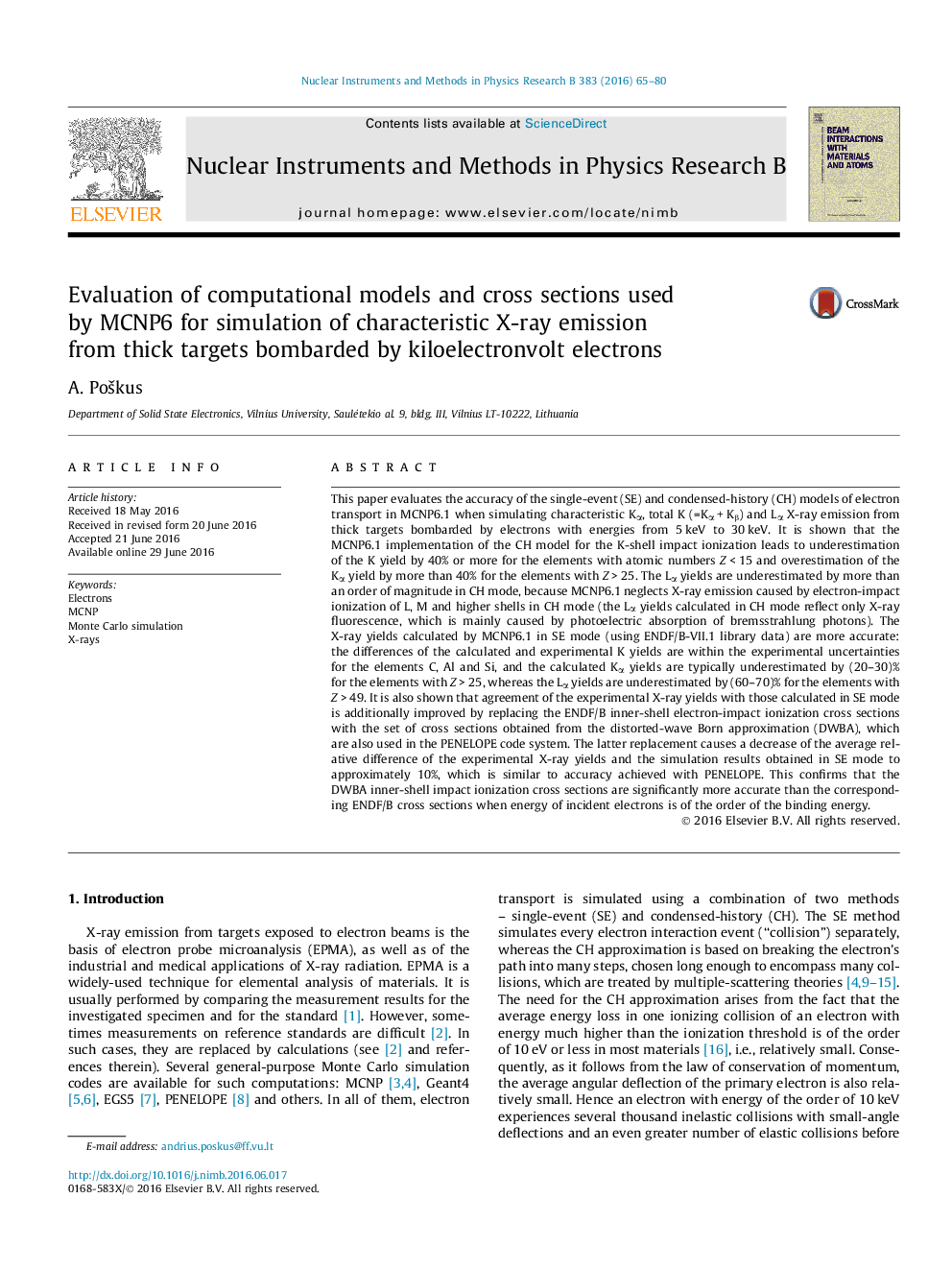| کد مقاله | کد نشریه | سال انتشار | مقاله انگلیسی | نسخه تمام متن |
|---|---|---|---|---|
| 8039629 | 1518638 | 2016 | 16 صفحه PDF | دانلود رایگان |
عنوان انگلیسی مقاله ISI
Evaluation of computational models and cross sections used by MCNP6 for simulation of characteristic X-ray emission from thick targets bombarded by kiloelectronvolt electrons
دانلود مقاله + سفارش ترجمه
دانلود مقاله ISI انگلیسی
رایگان برای ایرانیان
موضوعات مرتبط
مهندسی و علوم پایه
مهندسی مواد
سطوح، پوششها و فیلمها
پیش نمایش صفحه اول مقاله

چکیده انگلیسی
This paper evaluates the accuracy of the single-event (SE) and condensed-history (CH) models of electron transport in MCNP6.1 when simulating characteristic Kα, total K (=Kα + Kβ) and Lα X-ray emission from thick targets bombarded by electrons with energies from 5 keV to 30 keV. It is shown that the MCNP6.1 implementation of the CH model for the K-shell impact ionization leads to underestimation of the K yield by 40% or more for the elements with atomic numbers Z < 15 and overestimation of the Kα yield by more than 40% for the elements with Z > 25. The Lα yields are underestimated by more than an order of magnitude in CH mode, because MCNP6.1 neglects X-ray emission caused by electron-impact ionization of L, M and higher shells in CH mode (the Lα yields calculated in CH mode reflect only X-ray fluorescence, which is mainly caused by photoelectric absorption of bremsstrahlung photons). The X-ray yields calculated by MCNP6.1 in SE mode (using ENDF/B-VII.1 library data) are more accurate: the differences of the calculated and experimental K yields are within the experimental uncertainties for the elements C, Al and Si, and the calculated Kα yields are typically underestimated by (20-30)% for the elements with Z > 25, whereas the Lα yields are underestimated by (60-70)% for the elements with Z > 49. It is also shown that agreement of the experimental X-ray yields with those calculated in SE mode is additionally improved by replacing the ENDF/B inner-shell electron-impact ionization cross sections with the set of cross sections obtained from the distorted-wave Born approximation (DWBA), which are also used in the PENELOPE code system. The latter replacement causes a decrease of the average relative difference of the experimental X-ray yields and the simulation results obtained in SE mode to approximately 10%, which is similar to accuracy achieved with PENELOPE. This confirms that the DWBA inner-shell impact ionization cross sections are significantly more accurate than the corresponding ENDF/B cross sections when energy of incident electrons is of the order of the binding energy.
ناشر
Database: Elsevier - ScienceDirect (ساینس دایرکت)
Journal: Nuclear Instruments and Methods in Physics Research Section B: Beam Interactions with Materials and Atoms - Volume 383, 15 September 2016, Pages 65-80
Journal: Nuclear Instruments and Methods in Physics Research Section B: Beam Interactions with Materials and Atoms - Volume 383, 15 September 2016, Pages 65-80
نویسندگان
A. Poškus,